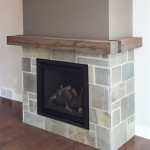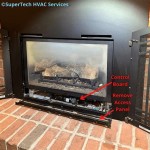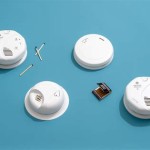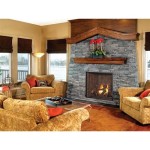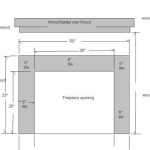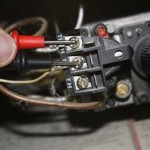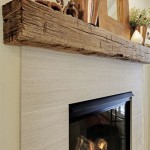How To Use A Fireplace Damper
A fireplace damper is an essential component of a traditional fireplace system, controlling airflow within the chimney. Understanding its function and proper operation is crucial for both efficient fireplace use and home safety. Neglecting the damper can lead to significant energy loss, increased heating costs, and potential safety hazards. This article provides comprehensive guidance on how to effectively use a fireplace damper.
The primary purpose of a fireplace damper is to regulate the flow of air in and out of the chimney. When the fireplace is in use, the damper is opened to allow smoke and combustion gases to escape. Conversely, when the fireplace is not in use, the damper should be closed to prevent drafts from entering the home and to keep outside elements, such as rain, snow, and animals, out of the chimney.
There are several types of fireplace dampers, each with its own advantages and disadvantages. These include throat dampers, top-mounted dampers, and hybrid dampers. Understanding the type of damper installed in a fireplace is important for proper operation and maintenance.
Identifying the Type of Fireplace Damper
The most common type of fireplace damper is the throat damper. This damper is located directly above the firebox, within the throat of the fireplace. Throat dampers are typically made of cast iron and are operated by a lever or handle located on the fireplace wall or inside the firebox. They are relatively inexpensive and easy to install, but they are less effective at preventing air leakage than other types of dampers.
Top-mounted dampers, also known as top-sealing dampers, are installed at the top of the chimney. They provide a tighter seal than throat dampers, preventing drafts and reducing energy loss. Top-mounted dampers are typically operated by a cable or chain that runs down the chimney flue to the fireplace. They are more expensive than throat dampers but offer superior energy efficiency and chimney protection.
Hybrid dampers combine features of both throat and top-mounted dampers. These dampers typically consist of a throat damper with an added sealing mechanism to improve airtightness. They offer a compromise between the affordability of throat dampers and the energy efficiency of top-mounted dampers.
To identify the type of damper in a fireplace, visually inspect the area above the firebox. If a metal plate with a lever or handle is visible within the throat of the fireplace, it is likely a throat damper. If there is no visible damper in the throat and a cable or chain runs down the chimney flue, it is likely a top-mounted damper. If the damper is a combination of both, it may be a hybrid damper.
Operating the Fireplace Damper Correctly
Proper operation of the fireplace damper is essential for both safe and efficient fireplace use. Failing to open the damper before lighting a fire can result in smoke and carbon monoxide accumulating in the home. Leaving the damper open when the fireplace is not in use can lead to significant energy loss.
Before lighting a fire, ensure the damper is fully open. This allows for proper ventilation and prevents smoke from backing up into the living space. To open a throat damper, move the lever or handle to the open position. The specific mechanism may vary depending on the design of the damper. With a top-mounted damper, pull the cable or chain to raise the damper and create an opening for the smoke to escape.
After the fire has completely extinguished and the embers have cooled, close the damper to prevent drafts and heat loss. Closing the damper seals the chimney flue, reducing the flow of air into and out of the house. This helps to maintain a consistent temperature and reduces energy consumption. To close a throat damper, move the lever or handle to the closed position. With a top-mounted damper, release the cable or chain to lower the damper and seal the chimney.
It is crucial to ensure the damper is fully closed when the fireplace is not in use. A partially open damper can still allow significant air leakage, negating the benefits of closing it. Periodically check the damper to ensure it is properly sealed.
Certain situations might warrant leaving the damper slightly open, even when the fireplace is not in use. If the home experiences strong winds that cause downdrafts in the chimney, a slightly open damper can help to alleviate the problem. However, this should be done with caution, as it can also lead to heat loss. Always prioritize closing the damper fully when possible to maximize energy efficiency.
Maintaining the Fireplace Damper for Optimal Performance
Regular maintenance of the fireplace damper is essential to ensure its proper functionality and longevity. Over time, dampers can become corroded, warped, or obstructed by debris. These issues can affect their ability to seal properly and can even render them unusable.
Inspect the damper regularly for signs of damage or deterioration. Check for rust, cracks, or warping in the damper plate. Also, inspect the operating mechanism, such as the lever, handle, cable, or chain, for any signs of wear or damage. If any issues are detected, address them promptly to prevent further damage.
Clean the damper regularly to remove any accumulated soot, creosote, or debris. Use a wire brush or vacuum cleaner to remove loose particles. For more stubborn deposits, use a specialized chimney cleaning solution. Be sure to follow the manufacturer's instructions when using any cleaning products.
Lubricate the damper's moving parts periodically to ensure smooth operation. Use a heat-resistant lubricant specifically designed for fireplace components. Apply the lubricant to the hinges, levers, and other moving parts of the damper.
If the damper is significantly damaged or deteriorated, it may need to be repaired or replaced. Minor repairs, such as replacing a broken handle or lubricating a sticky mechanism, can often be performed by the homeowner. However, more extensive repairs, such as repairing a warped damper plate or replacing a damaged cable, may require the services of a professional chimney sweep or fireplace technician.
Consider replacing an older, inefficient throat damper with a top-mounted damper for improved energy efficiency. While the initial investment may be higher, the long-term energy savings can offset the cost. A top-mounted damper provides a tighter seal than a throat damper, preventing drafts and reducing heat loss.
In summary, understanding the function and proper operation of a fireplace damper is crucial for both efficient fireplace use and home safety. By identifying the type of damper, operating it correctly, and maintaining it regularly, homeowners can maximize the benefits of their fireplace while minimizing energy loss and potential safety hazards.

How To Use A Fireplace Damper The Right Way

How To Open A Chimney Damper Traditional Fireplace Pros

How Do Fireplace Dampers Work Zoro Com

The Purpose Of Your Chimney Damper Asheville Nc Environmental

What Is A Chimney Damper Full Service

Basic Home Improvements How To Work A Fireplace Damper

Chimney Damper Usage Montgomery County Pa Wells

Fireplace Flue Dampers Ensure Optimal On

Fireplace Damper Repair Full Service Chimney Kansas City

Everything You Need To Know About Chimney Dampers All Pro Service
Related Posts


